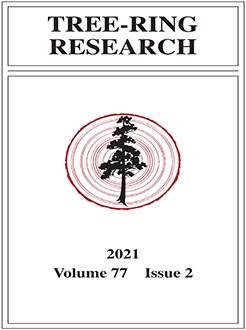There is a significant dendrochronological gap in the Puna of the central Andes of Peru, which motivates research on new species. In this study, we present the first tree-ring chronologies of Escallonia myrtilloides. We collected samples at San Pedro Saño and Sapallanga in Peru, analyzed the anatomical characteristics that delimit the annual growth rings, and developed two tree-ring chronologies through conventional dendrochronological techniques. The tree-ring chronologies cover the period 1940–2015 (76 years) for San Pedro Saño and 1960–2015 (56 years) for Sapallanga. The E. myrtilloides chronologies presented similar values of mean sensitivity, Rbar and EPS to those recorded for Polylepis tarapacana, Polylepis pepei, and Polylepis rugulosa in the Puna region. The analysis of the climate-growth relationships indicated positive correlations with precipitation and negative correlations with temperature in particular months of the current growing season (October–April). This precipitation/temperature-sensitive record highlights the high value of E. myrtilloides for future studies on the influence of climate on tree growth in the central Andes.
How to translate text using browser tools
20 July 2021
Assessing Dendrochronological Potential of Escallonia myrtilloides in the High Andes of Peru
Edilson J. Requena-Rojas,
Mariano M. Amoroso,
Ginette Ticse-Otarola,
Doris B. Crispin-Delacruz
ACCESS THE FULL ARTICLE

Tree-Ring Research
Vol. 77 • No. 2
July 2021
Vol. 77 • No. 2
July 2021
dendrochronology
Escallonia myrtilloides
Peruvian Puna




